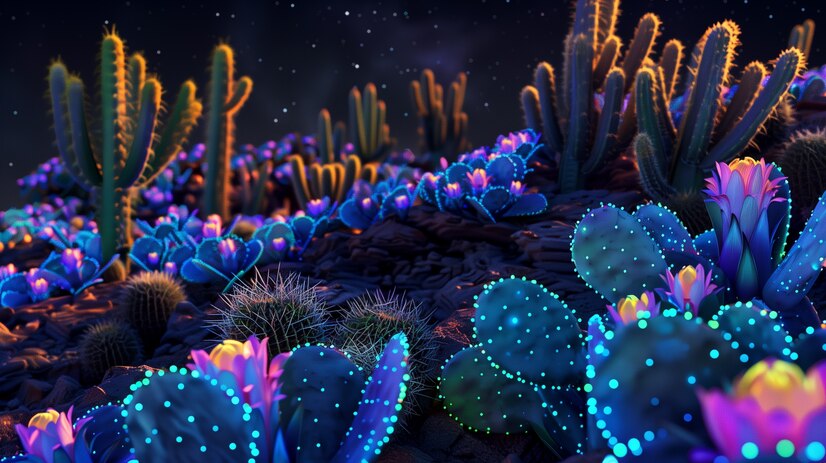Coral reefs are one of the most vibrant and diverse ecosystems on our planet. They are often referred to as the “rainforests of the sea” due to their rich biodiversity and crucial role in marine life. This article will explore what corals are, their importance, the threats they face, and conservation efforts underway to protect these vital ecosystems.
What Are Corals?
Corals are marine invertebrates that belong to the phylum Cnidaria. They are composed of tiny animals called polyps, which resemble small sea anemones. Each polyp secretes a hard outer skeleton made of calcium carbonate, which forms the structure of the coral reef. Corals can be found in a variety of shapes and colors, creating stunning underwater landscapes.
The Anatomy of Coral
Coral polyps have a simple structure. Each polyp has a central mouth surrounded by tentacles. These tentacles contain specialized cells called cnidocytes, which help in capturing prey. The most critical aspect of cora’l anatomy is the symbiotic relationship they share with zooxanthellae, a type of algae. These algae live within the coral’s tissues and provide energy through photosynthesis, allowing corals to thrive in nutrient-poor waters.
The Importance of Coral Reefs
Coral reefs play an essential role in the health of our oceans and the planet as a whole. Here are several reasons why they are so vital:
Biodiversity Hotspots
Coral reefs are home to an estimated 25% of all marine species, including fish, mollusks, and various invertebrates. This biodiversity is crucial for maintaining ecological balance and ensuring the health of marine ecosystems.
Coastal Protection
Coral reefs act as natural barriers that protect coastlines from erosion and storm surges. They reduce the impact of waves on shorelines, helping to prevent damage to coastal communities.
Economic Value
Coral reefs contribute significantly to local economies through tourism and fisheries. They attract millions of tourists each year who come to snorkel, dive, and explore the underwater beauty. Additionally, many coastal communities rely on healthy reefs for their livelihoods through fishing.
Climate Regulation
Coral reefs play a role in carbon cycling, helping to regulate carbon dioxide levels in the ocean. They absorb carbon and store it in their limestone structures, contributing to the overall health of the marine environment.
Threats to Coral Reefs
Despite their importance, cora’l reefs face numerous threats, primarily driven by human activities and climate change. Understanding these threats is crucial for effective conservation efforts.
Climate Change
Rising sea temperatures due to climate change lead to cora’l bleaching, a phenomenon where corals expel their symbiotic algae. This process not only affects the corals’ color but also their health, making them more susceptible to disease. Prolonged bleaching can result in mass die-offs, severely impacting reef ecosystems.
Ocean Acidification
Increased carbon dioxide in the atmosphere leads to higher levels of carbonic acid in ocean waters, causing ocean acidification. This change in chemistry affects corals’ ability to produce their calcium carbonate skeletons, weakening the reef structure over time.
Overfishing
Overfishing disrupts the balance of marine ecosystems, leading to a decline in fish populations that rely on cora’l reefs for habitat. Removing key species can have cascading effects, altering the entire ecosystem.
Pollution
Pollutants from agricultural runoff, plastic waste, and sewage discharge can harm cora’l reefs. Excess nutrients from fertilizers can lead to algal blooms that outcompete corals for space and resources, further stressing these ecosystems.
Habitat Destruction
Coastal development, such as construction and dredging, often results in the destruction of cora’l habitats. Mangroves and seagrasses. Which are critical for cora’l health, are also threatened by urban expansion.
Conservation Efforts
Recognizing the threats to cora’l reefs, various conservation initiatives have been established worldwide to protect these vital ecosystems.
Marine Protected Areas (MPAs)
Establishing MPAs is one of the most effective strategies for conserving cora’l reefs. These areas restrict human activities, allowing ecosystems to recover and thrive. MPAs provide safe havens for marine species and help maintain biodiversity.
Coral Restoration Projects
Coral restoration initiatives aim to rehabilitate damaged reefs by planting cora’l fragments in degraded areas. These projects often involve community participation and have shown promising results in rebuilding cora’l populations.
Sustainable Fishing Practices
Encouraging sustainable fishing practices helps to protect fish populations and their habitats. By implementing regulations on catch limits and promoting alternative livelihoods for fishing communities, we can reduce the pressure on cora’l reefs.
Pollution Reduction
Efforts to reduce pollution entering coastal waters are essential for coral health. This includes implementing better waste management systems, reducing plastic use, and promoting sustainable agricultural practices to minimize runoff.
Climate Action
Addressing climate change is crucial for the future of coral reefs. Global efforts to reduce greenhouse gas emissions and limit global warming are essential for preserving these ecosystems. Individuals can also contribute by adopting more sustainable lifestyles.
The Role of Technology in Coral Conservation
Technology is playing an increasingly vital role in coral conservation. Innovative solutions are being developed to monitor coral health, manage fisheries, and restore damaged reefs.
Remote Sensing and Drones
Satellite imagery and drones are used to monitor coral reefs from above. These technologies allow scientists to gather data on reef health, track changes over time, and identify areas that require immediate attention.
Genetic Research
Advancements in genetic research have led to the development of more resilient coral strains. By selectively breeding corals that can withstand higher temperatures and acidity, researchers aim to bolster coral populations against the effects of climate change.
Citizen Science
Engaging the public in coral monitoring initiatives has become a powerful tool for conservation. Programs that train volunteers to collect data on reef health can significantly increase the amount of information available to researchers.
Conclusion
Coral reefs are vital ecosystems that provide numerous benefits to our planet, from supporting biodiversity to protecting coastlines and contributing to local economies. However, they face significant threats from climate change, pollution, and human activities. It is crucial that we work together—governments, communities, and individuals—to protect and restore these precious ecosystems for future generations. Through effective conservation efforts, innovative technology, and a commitment to sustainable practices, we can ensure that coral reefs continue to thrive and support life in our oceans.
FAQs
What are coral reefs made of?
Coral reefs are primarily made of calcium carbonate. Which is secreted by tiny marine animals called polyps.
Why are coral reefs important?
Coral reefs are important for their biodiversity, coastal protection, economic value through tourism and fisheries, and their role in climate regulation.
What causes coral bleaching?
Coral bleaching occurs when corals expel the symbiotic algae living in their tissues due to stress from rising sea temperatures, pollution, or other environmental changes.
How can we help protect coral reefs?
You can help protect cora’l reefs by reducing plastic use, supporting sustainable seafood, participating in local conservation efforts, and advocating for policies that protect marine environments.
What is being done to restore damaged coral reefs?
Coral restoration projects involve planting cora’l fragments in damaged areas and often include community participation to rebuild healthy reef ecosystems.







